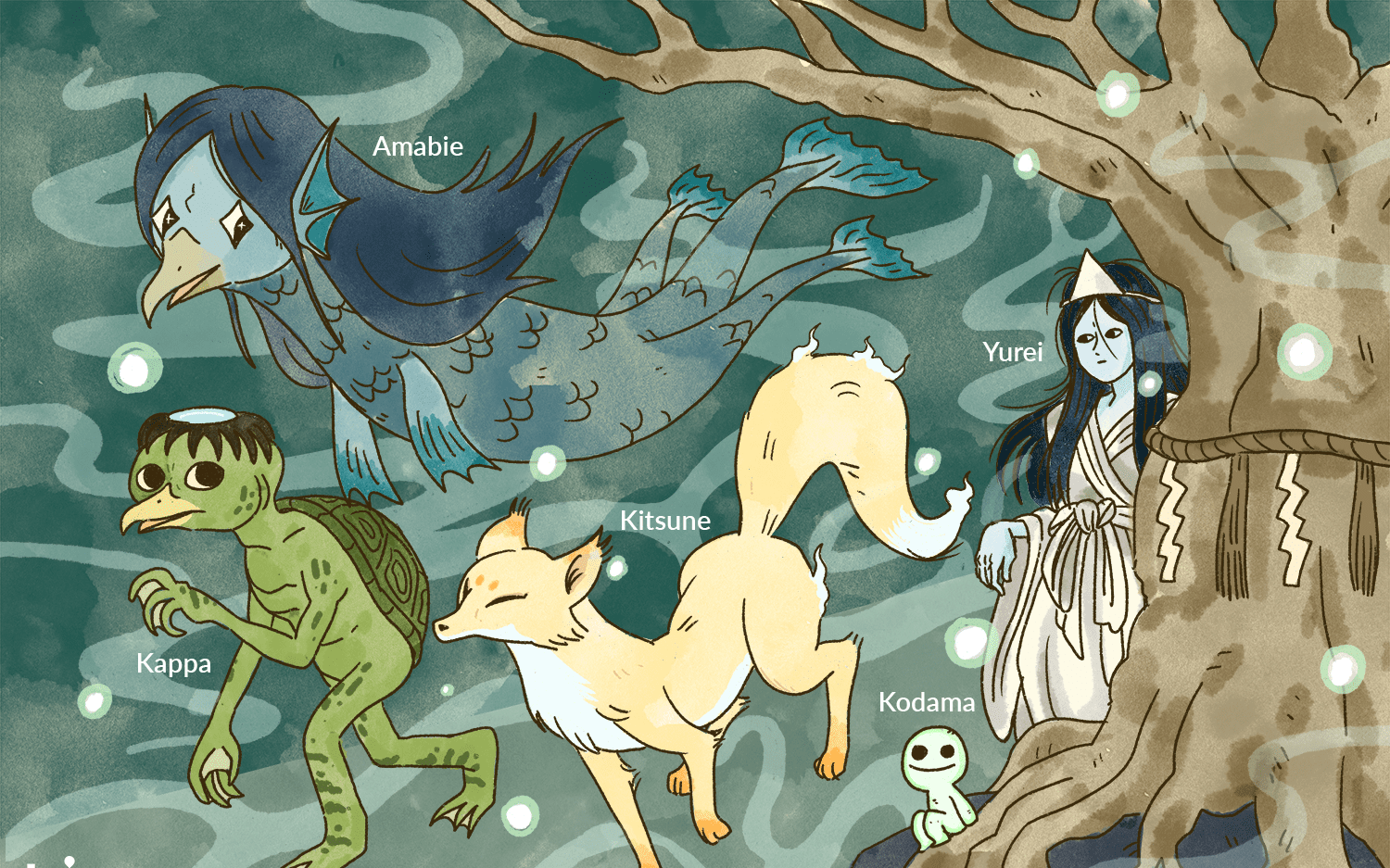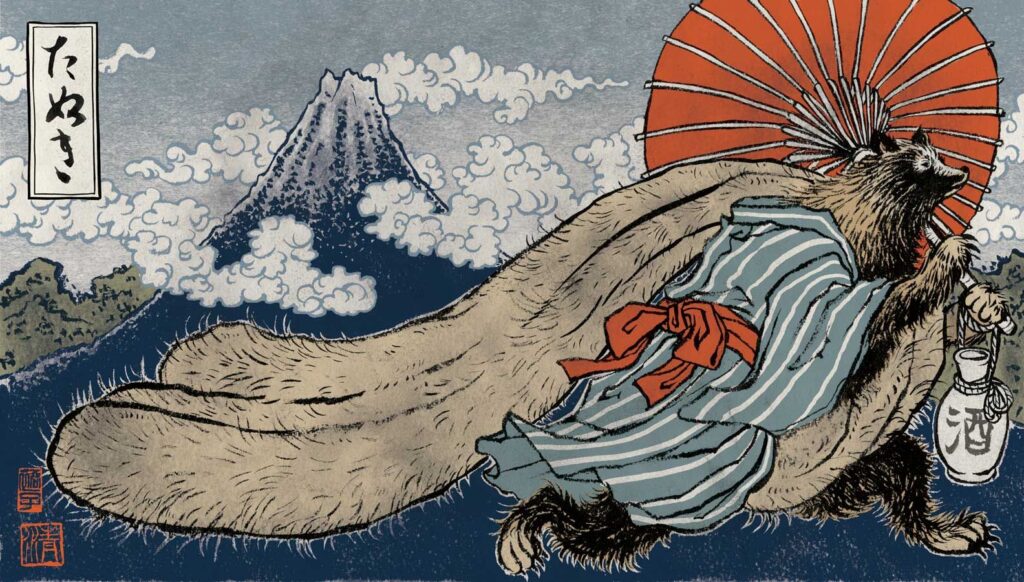Plenty of cultures around the globe feature all sorts of mythical creatures, but very few are as unique as the mythical creatures of Japanese mythology. These unique supernatural beings, youkai as they are called in Japanese, are mischievous creatures that can either be purely evil or help you out in times of need, for a price of course. Compared to Western mythology, Japanese mythical creatures tend to have much more creative designs, from amalgamations of different animals to flying heads and inanimate objects coming to life.

Tanuki
The first, and possibly one of the most widely known youkai, is the raccoon dog, also known as Tanuki in Japanese folklore. Although tanuki is real animals found in the Japanese wild, they have inspired many legends and folktales in Japanese mythology about the so-called Bake-tanuki (lit. monster raccoons)
Bake -Tanuki is a powerful, mischievous creature with a cheerful, jovial personality. They are not inherently evil, but they love using their strong shape-shifting and possessing powers to prank travelers and steal their money – for no other reason than to have fun. Tanuki can shapeshift into other humans, other animals, inanimate household objects, or even parts of nature such as trees, rocks, and roots. They can take any passing travelers by surprise and play pranks on them.

Kitsune
Kitsune, or mythical foxes, are yet another famous youkai in Japanese mythology. They are known to be magical, highly intelligent Japanese mythical creatures that possess many powerful magical and spiritual abilities, including shapeshifting, far-seeing, high intelligence, and longer lifespans.
In Japanese folklore, kitsune can be a symbol of both good and evil and were thought to grow a new tail for every 100 years they lived on this earth.

Kappa
Kappa is such a youkai, considered to be a Suijin (lit. Water God). Kappa is a humanoid Japanese mythical creature with some features resembling amphibians and reptiles. They tend to look different from one Kappa to another. Some have adult bodies or child bodies, with skin colored in various shades of green. Their skin might be slimy or covered in scales, and their arms and legs webbed between the toes and fingers.
As unique as they can be, all Kappa has a turtle shell on their back, a mouth resembling a beak, and an object resembling a bowl on their head, in which it carries a liquid that is said to be its life force. If this liquid spills or the bowl is damaged in any way, a Kappa can become incredibly weakened or even die.

Tengu
Tengu is another Japanese supernatural being that appears in many shapes and forms throughout history. The first Tengu depictions showed them as monsters with crow-like features such as kite-like black wings, bird heads, and beaks. Later on, newer depictions show Tengu as long-nosed creatures with red faces.
At first, Tengu was considered mischievous Japanese mythical creatures but not inherently evil or particularly dangerous, as they were quite easy to avoid or defeat. Many legends speak of tengu as bringer of war and destruction, but they were also known as protective deities and spirits of mountains and forests over time.

Shikigami
Translated as ‘ceremonial spirits’, Shikigami are spirit servants with no free will on their own that have terrified Japanese people for centuries. Shikigami is mostly invisible to the human eye unless they take special shapes. Some of the possible shapes are paper dolls, some types of origami, or amulets, but the most popular one is turning them into neatly and artistically folded and cut paper manikins.
Shikigami can also take the shape of animals, as they are known to possess chickens, dogs, and even cows, in their quest to fulfill their master’s orders.

Tsukumogami
Tsukumogami are traditionally considered to be tools or everyday household items that have acquired a kami (or spirit) of their own, after living for at least a hundred years. Although generally considered harmless, there are instances of Tsukumogami becoming vengeful towards the people who may have mistreated them or abandoned them throughout their lives. The first ones are Kasa-obake (lit. monster umbrellas), monsters represented as one-legged umbrellas with one eye and sometimes arms and a long tongue. It is not clear what the purpose of these Kasa-back was in Japanese folklore, but many illustrations of them have been found throughout the years.

Another example of a Tsukumogami mostly found in illustrations is Chōchin-obake, a lantern that becomes sentiest after 100 years. Boroboroton is a great example of an evil Tsukumogami – they will not hesitate to cause harm if they believe you deserve it. Boroboroton are Japanese sleeping mats (or futons), which come alive after having been used and worn out for 100 years. The last notable Tsukumogami is the Ungaikyō, or “mirror beyond the clouds”.

All the different creatures present in Japanese folklore open the doors to understanding their culture just a little bit more.
